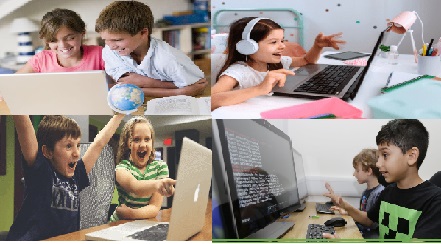How to Teach Coding to Kids & Create a Presence in the Tech Industry
Categories: Kids Programming

How to Teach Coding to Kids & Create a Presence in the Tech Industry
While learning coding with a computer is essential, unplugging and learning offline can be equally beneficial for students. We've gathered together five involved exercises underneath that support essential coding abilities without utilizing a computer:
Play Robot Turtle. Playing board games is an easy and effective way to have fun and learn offline! is a fun game that shows the essentials of programming to early students. Using code cards, students move their turtles around the game board to reach a prized gem. Through play, students will learn about coding and tasks as well as develop planning and sequential reasoning skills.
Code a Lego Maze. Teach students to think like programmers! With four levels of difficulty, this Lego maze activity introduces a variety of programming concepts, such as loops and conditional statements. Contingent upon the level, understudies will make a bunch of directions or orders to direct the person through the labyrinth as effectively as could really be expected.
Kids Ruby
Kids Ruby was created to teach kids how to code real Ruby; This is a downloadable program that will give kids hands-on experience with Ruby.
Raspberry Pi is an inexpensive credit-card-sized computer that kids can use by plugging in a mouse and keyboard and then hooking it up to a TV monitor. It provides a full desktop experience, while also encouraging kids to learn to code.
Make Binary Bracelets. Binary code is the least difficult type of computer code. The coding framework utilizes 0 and 1 to address a letter, digit, or other people in a computer. As their primary language, it is the way most computers send, receive, and store information. Students can practice using binary codes by making binary bracelets that represent their names. Teaching binary code is a great way to introduce coding to beginner learners.
Teaching coding to kids and establishing a presence in the tech industry can be exciting and rewarding. Here are some steps to help you get started:
Understand the Basics: Familiarize yourself with coding concepts and programming languages suitable for kids, such as Scratch, Blockly, Python, or JavaScript. Gain proficiency in these languages and understand how to break down complex concepts into simple, understandable parts.
Plan Engaging Curriculum: Develop a structured curriculum that progresses gradually, introducing new concepts as students advance. Use interactive and hands-on activities to keep children engaged and interested. Incorporate projects and challenges to allow them to apply what they have learned.
Create a Safe Learning Environment: Provide a supportive and inclusive space for kids to learn. Encourage collaboration, problem-solving, and creativity. Foster a growth mindset by celebrating successes and encouraging resilience when facing challenges.
Utilize Kid-Friendly Tools: Choose age-appropriate coding tools and platforms that make learning fun and interactive. Platforms like Scratch, Code.org, or Tynker offer visual interfaces and game-like environments that appeal to children.
Offer Coding Classes or Camps: Consider offering coding classes or organizing coding camps for kids. Advertise your services through local schools, community centers, and social media platforms. Start small and gradually expand as you gain more experience and demand.
Remember, teaching coding to kids requires patience, adaptability, and a genuine passion for inspiring young minds. With dedication and a commitment to continuous learning, you can create a positive impact in the lives of children and establish a presence in the tech industry.